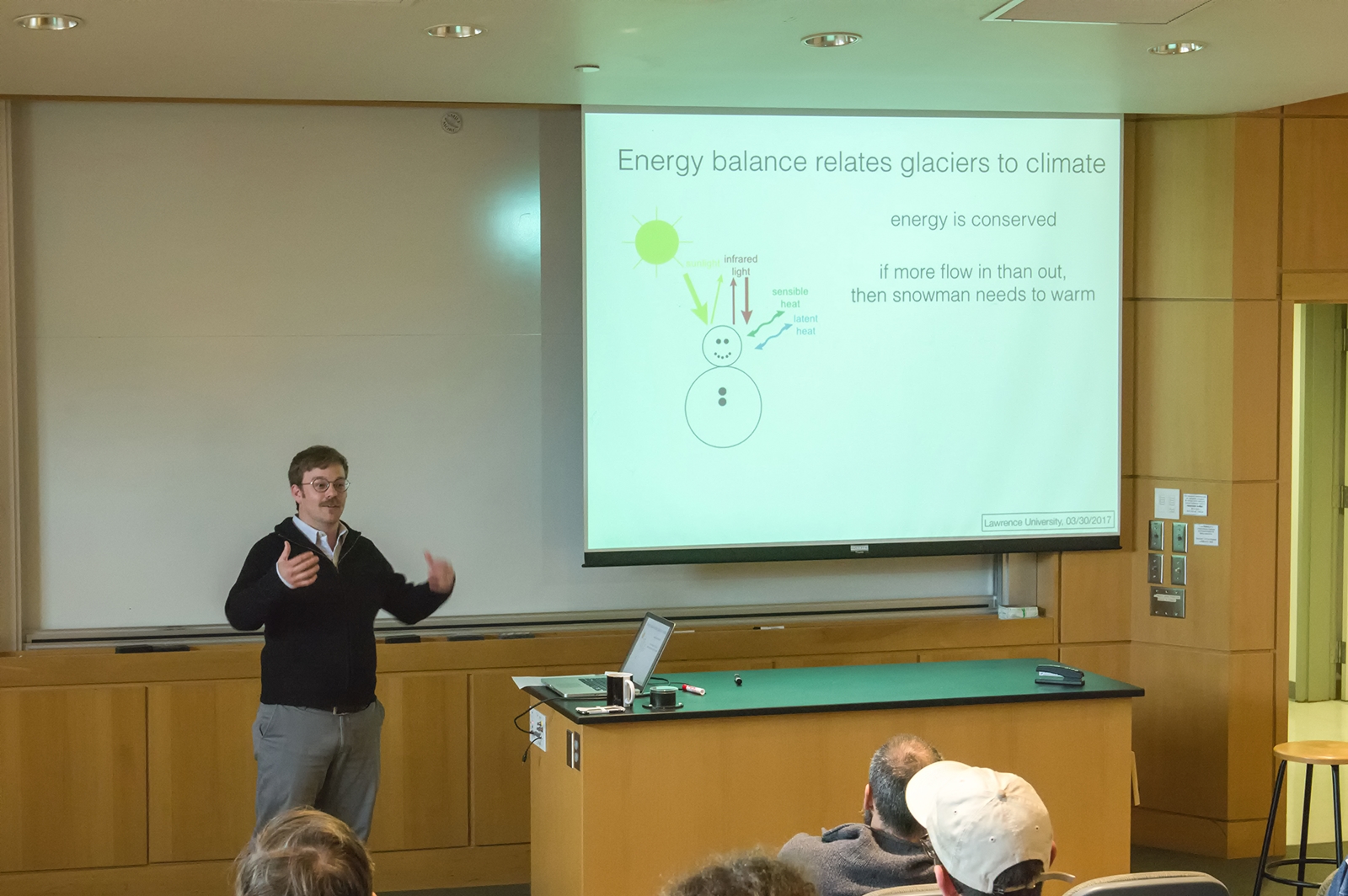Malone explains the process of tropical glaciers melting.
Photo by Billy Liu
On March 30, in the Thomas A. Steitz Hall of Science, Visiting Assistant Professor of Geology Andrew Malone, a Ph.D candidate from the University of Chicago presented his findings, as well as other facts, about tropical glaciers and climate change. The presentation was aimed toward geology majors, who made up of most of the attendees.
Tropical glaciers are glaciers living in low latitudes, mostly in the Andes in South America where Malone has focused his research. Wet tropical glaciers are his main focus, though he does look at the dry glaciers in the region. Malone reported that most tropical glaciers are wet glaciers.
For the communities and countries that are near the Andes, Malone said the glaciers “serve as regional water towers. 50% of Bolivia’s water supply comes from these glaciers.” He then went on to explain how climate change is affecting these glaciers. Normally, glaciers melt by taking in extra heat energy but become equally replaced with snow. However, glaciers shrink when they absorb too much energy from sun radiation and melt more than the snow accumulation.
This glacial shrinking, Malone said, “corresponds with regional, as well as global, climate change.” He and his fellow scientists have been “using the glacier melting as a paleothermometer” to measure the rate of which the glaciers are shrinking and seeing if this happened before based on if the glaciers have carved the land beneath them.
At the end of the presentation, Malone opened up the discussion to audience members to ask questions. One attendee asked what part of the glaciers is melting. Malone replied that the bases of glaciers melt. The top of the glaciers stays high in the mountains where the temperature is cold enough to sustain it.
For more about Malone’s research on tropical glaciers, Malone encouraged students to email him at amalone@uchicago.edu.

